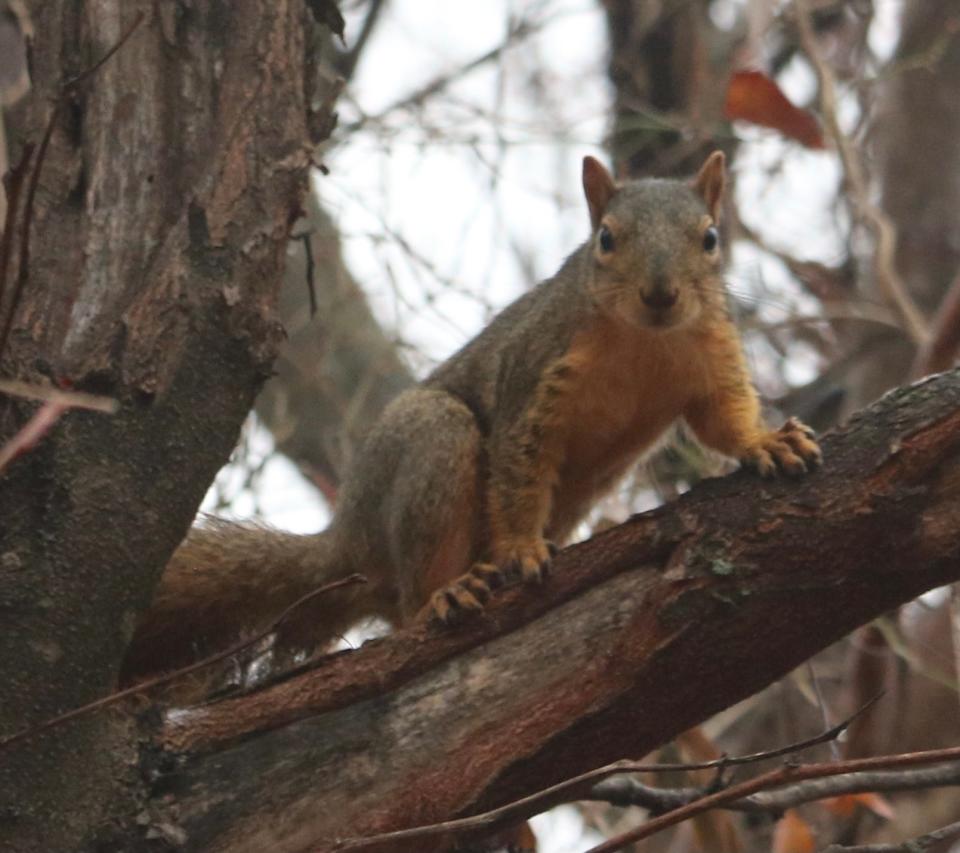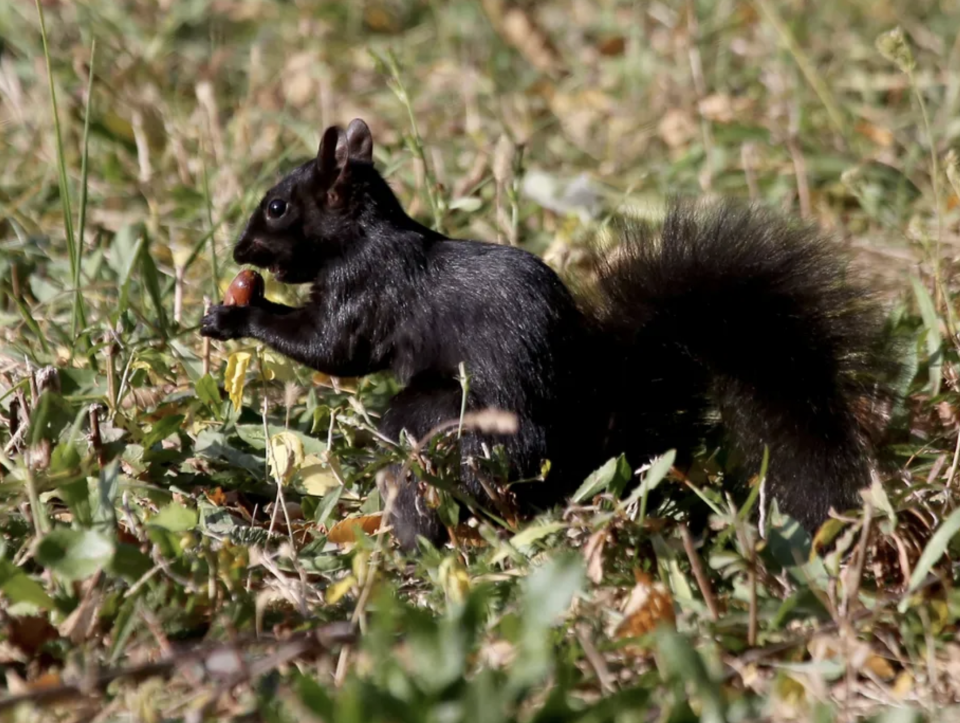Behavior is squirrelly: Fox and gray squirrels lean toward different habitats

Ka- BOOM!!
Oh, cripes, not again.
Up and down the hallway, the lights were out in all the classrooms and laboratories, along with the refrigerators, air conditioning units and lab equipment.
I guess I’d better go and get it.
One of the entertaining aspects of being the field biologist on a small college campus is getting called when a cardinal gets into a classroom, a bat works its way down a chimney into a sorority house or a fox squirrel electrocutes itself on a power line supplying the science building.
Sure enough, there it lay on the ground, sorry thing, 20 feet below a blown transformer it must have touched with a front paw while its hind feet were still on the exposed power line. Oh well, another one for the specimen freezer − an all-too-common occurrence, many years ago, before the construction of the new sciences complex with its re-configured electrical feeds.
Fox squirrels (Sciurus niger) get their name from their most common coloration, a brownish-gray back with a straw-yellow to burnt orange belly and tail. Weighing 1-2.5 pounds and measuring 20-30 inches in length (about half of which is tail), they are North America’s largest tree squirrel.
Their extensive range covers most of the eastern portions of the U.S., with the interesting exception of New England, New Jersey and most of New York and Pennsylvania. Isolated populations also are found in a number of western states where they have been introduced.
Fox squirrels are larger than gray squirrels
Curiously, the fox squirrel’s distribution almost perfectly mirrors that of the somewhat smaller Eastern gray squirrel (Sciurus carolinensis) − 16.5-21.5 inches nose to tip of tail − although the gray’s range includes all of the northeast except for the northernmost part of Maine.

But within that common range, gray and fox squirrels differ in preferred habitats and behavior. Grays traditionally favored the dense deciduous forests that covered so much of the eastern portion of the continent prior to the arrival of European colonists with their axes and plows. And back in the day, those forests were flush with them.
In his book "A Guide to the Mammals of Ohio," Jack Gottschang noted, “The early literature contains a number of interesting accounts of the emigration of thousands or even millions of gray squirrels from one area to another. … In the early days in Ohio, gray squirrels were so abundant that citizens were encouraged to pay their property taxes in squirrel skins at the rate of three cents per skin.”
Fox squirrels, however, avoid large tracts of heavily forested land preferring more open woodlots, and were, therefore, far less common than grays in pre-colonial times. However, as broad expanses of old growth forests were cleared for agriculture in the 1800s, gray squirrel populations plummeted, and fox squirrel populations expanded into the remaining woodlots.
But what followed in the 20th and 21st centuries was largely unexpected.
Gray squirrels invaded urban areas
The first surprise: Gray squirrels invaded eastern urban areas, becoming the dominant squirrel in many cities. That was odd enough since they originally had been deep forest creatures, shying away from human habitation. Second, and more recently, city dwellers − but not residents of rural areas − are seeing a marked increase in melanistic (black-furred) grays.

The gray squirrels I grew up with in western New York 50 years ago sported a handsome gray back and tail above a white belly, and that’s still the most commonly encountered pelage in forested areas throughout the east. But a 2019 study of squirrel populations in and around Syracuse, New York, illustrates an increasingly prevalent pattern being seen in many eastern cities.
The researchers found 65% of grays in the urban core were melanistic while only 13% had black fur in neighboring rural habitats.
The intriguing spin here is historical records indicate black-furred gray squirrels were especially common in the continent’s original old-growth forests. The thinking is those woodlands were so dense and dark that a melanistic squirrel would have been less visible to predators.
But in today’s more open, well-lit second-growth forest, a melanistic squirrel would be more visible to predators and hunters than one with a gray back whose coloration better matches a woodlot’s gray tree trunks.
Preliminary studies suggest there’s a different dynamic at play in a busy city. Here, in the absence of hunters and most predators, selection would favor melanistic over gray squirrels precisely because they are more easily seen…and therefore less likely to be hit by motorists.
Fox squirrels also adapted to urban life where they may sometimes seem more common than grays even though, especially in large cities, they are generally far outnumbered by them.
Because of their size, fox squirrels are clumsy in trees and spend more time foraging on the ground than gray squirrels. Also, while fox squirrels may be seen throughout the day, gray squirrels primarily are crepuscular, most active in early morning and twilight.
Ken Baker is a retired professor of biology and environmental studies. If you have a natural history topic you would like Dr. Baker to consider for an upcoming column, please email your idea to fre-newsdesk@gannett.com.
This article originally appeared on Fremont News-Messenger: Baker: Fox and gray squirrels a bit snooty about their habitats

